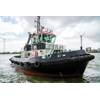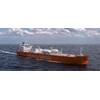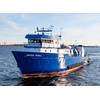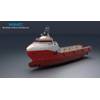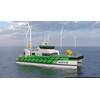DNV GL Revises Stern Tube Bearing Class Notations
DNV GL has revised its class rules for single stern tube bearing installations and introduced two new class notations, “Shaft align(1)” and “Shaft align(2)”, to help customers better manage the risk of stern tube bearing failure. The new class notations can be assigned to both newbuilds and vessels in service in conjunction with propeller shaft withdrawal.
The classification rules covering shaft alignment are formulated to achieve an acceptable distribution of loading on the shaft bearings and lubrication of the aft bearing, taking into consideration the bending moment induced by the propeller during operation. However, during turning manoeuvers at higher ship speeds, exaggerated propeller bending moments can occur, potentially resulting in a reduced shaft-bearing contact area and an exponential increase in local pressure and thermal loading. This could cause damage to the aft bearing. Most of the reported bearing damages have been observed in the aft-most part of the aft bearing, typically during a starboard turn on a right-handed propeller installation. The new rules put additional focus on the impact of these transient hydrodynamic propeller forces and moments, induced in turning conditions, on the aft-most propeller shaft bearing.
In the “Shaft align” class notations and the revised main class requirements for single stern tube bearing installations, a multi-sloped bearing design is mandatory. This is further supplemented by an additional evaluation of the aft bearing lubrication condition considering an increased propeller-induced hydrodynamic bending moment on the aft bearing in the downward direction. Additional design and installation criteria also assist to increase the operating margins and enhance bearing performance and fatigue lifetime in normal continuous running conditions.
“We are always looking to push the development of our rules forward to help our customers operate and maintain more reliable and safe ships,” says Geir Dugstad, Director of Ship Classification at DNV GL – Maritime. “With this revision to the DNV GL class rules and the two additional class notations, we will enable owners to enhance bearing performance, and benefit from a longer lifetime in their stern tube installations.”
The notation “Shaft align(1)” is intended for propulsion systems installed on vessels with conventional hull forms and incorporates enhanced aft bearing performance during normal and turning operating conditions. “Shaft align(2)” is intended for propulsion systems requiring additional calculations to predict hydrodynamic propeller loads during turning conditions, for example vessels with non-conventional hull forms such as asymmetric stern, twin skeg etc. Design and in-service follow-up rules for the class notations are included in the updated DNV GL rules for the classification of ships, Pt.6 Ch.2 Sec 10 and Pt.7 Ch.1 Sec 6(38) respectively.
“We hope that by introducing the revised main class rules for single bearing installations and ‘Shaft align (1) or (2)’ we can substantially reduce stern tube bearing failures,” says Oddvar Deinboll, Head of the Machinery section at DNV GL – Maritime. “We’ve received a lot of positive responses from the industry and are already working on some concrete projects.”



